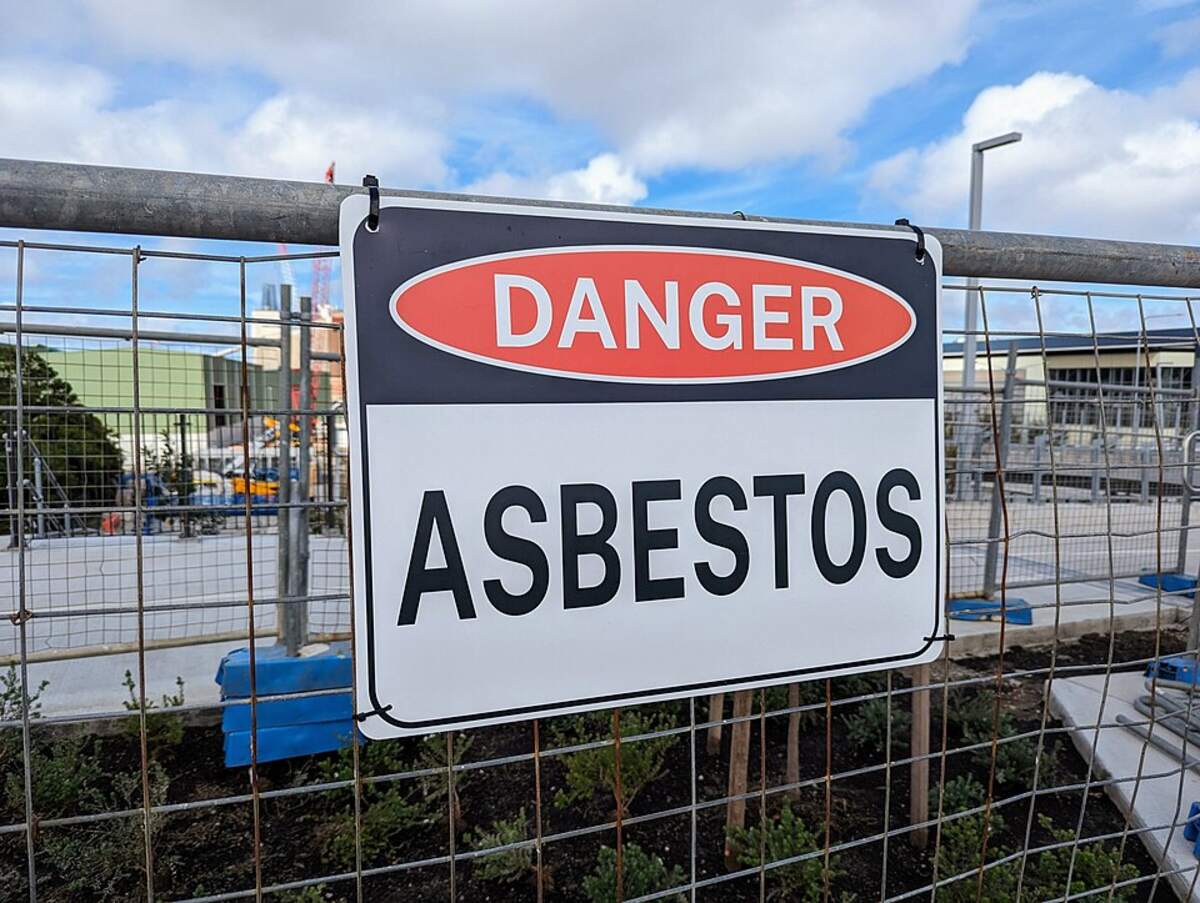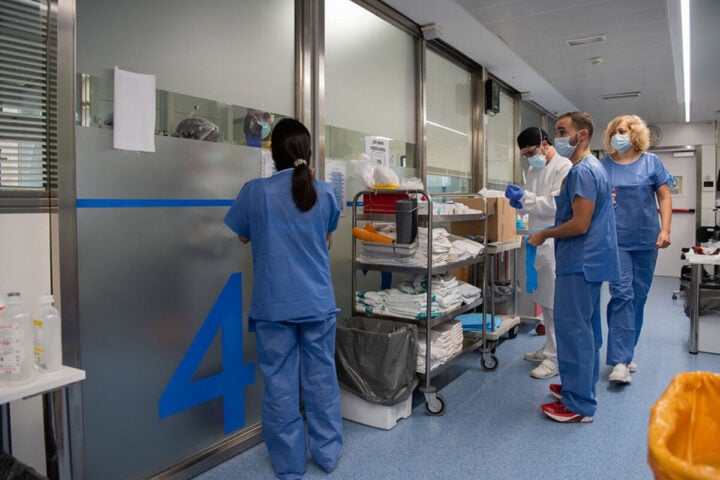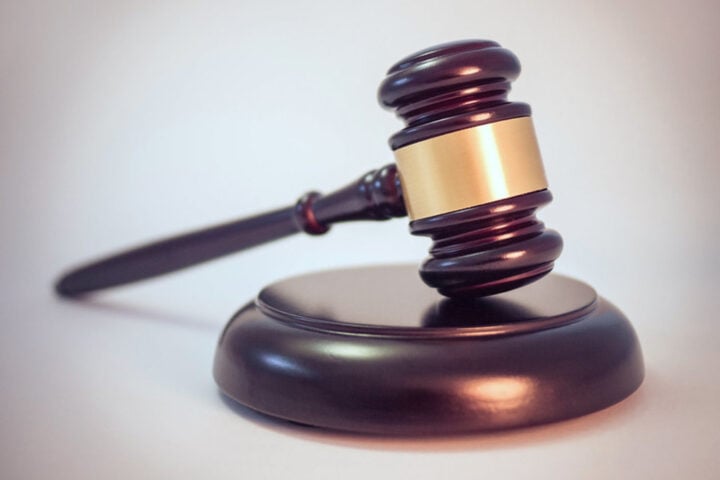Parks closed. Schools shuttered. Hospital grounds cordoned off. The discovery of asbestos-contaminated mulch across Sydney in January 2024 triggered widespread public health concerns and the largest investigation in NSW Environmental Protection Authority (EPA) history.
Now, property developer and Max Brenner chocolate café chain owner Arnold Vitocco faces charges, along with several companies linked to him, over what became a citywide environmental health crisis.
The EPA has brought forward 102 charges related to asbestos-contaminated mulch found at 26 sites across Sydney. Their investigation—described by the authority as their “largest investigation in the EPA’s history”—examined over 300 locations, with 79 ultimately testing positive for asbestos contamination.
“The prosecutions follow the largest investigation in the EPA’s history which was launched after bonded asbestos was discovered in mulch at Rozelle Parklands,” the EPA stated. “During the investigation over 300 sites were inspected, with 79 sites identified as having used contaminated mulch. All 79 sites have now been cleaned up by owners.”
The contamination forced the closure of numerous public spaces, including:
- Rozelle Parklands, where a concerned parent first discovered bonded asbestos in playground mulch
- Multiple schools, including St Michael’s Catholic Primary School in Meadowbank
- Several hospital grounds
- Parks throughout Sydney, disrupting community life and leading to event cancellations like the Sydney Gay and Lesbian Mardi Gras Fair Day
Breaking Down the Charges
The EPA’s case targets multiple entities:
- VE Resource Recovery Pty Ltd: Charged with failing to competently carry out resource recovery activities
- Arnold Vitocco: As sole director of VE Resource Recovery, charged with an executive liability offense
- Freescale Trading Pty Ltd and Runkorp Pty Ltd (both trading as Greenlife Resource Recovery Facility): Each face 50 charges, including allegations of reusing asbestos waste and conducting scheduled waste management activities without proper licensing
The charges center on operations at a waste recovery plant on The Northern Road in Bringelly. The first court hearing is scheduled for February 7, 2025, in the NSW Land and Environment Court.
Health Risks: Why Asbestos Matters
Asbestos contamination isn’t just an environmental concern—it’s a significant public health threat. According to the Australian Government Department of Health and Aged Care, asbestos exposure can cause:
- Asbestosis: A chronic lung disease characterized by scarring that makes breathing difficult
- Lung cancer: Risk significantly increases with asbestos exposure
- Mesothelioma: A rare, aggressive cancer affecting the lining of the lungs or abdomen that’s primarily caused by asbestos exposure
What makes asbestos particularly dangerous is its long latency period. Diseases typically develop 20-40 years after exposure, with no established safe exposure level.
Most of the asbestos discovered in Sydney’s mulch was in bonded form, where fibers are embedded in a harder matrix. However, at Harmony Park in Surry Hills, investigators found friable asbestos—the more dangerous form where fibers can easily become airborne and inhaled.
Industry Response & Denials
Greenlife Resource Recovery Facility has publicly rejected the allegations against them.
“Greenlife Resource Recovery Facility (GRRF) maintains its innocence and will strongly defend these allegations,” a spokesperson stated. “GRRF maintains that no asbestos contamination has been discovered by the EPA now, or during any previous testing at its Bringelly site.”
The company points to supply chain complexities as a potential explanation: “The supply chain is complex and there are several ways asbestos can contaminate materials. One scenario involves delivering clean materials to a remediated site, where they are mixed with the existing materials onsite.”
Similar Posts:
Their spokesperson added that the “media has been informed of the details before the company has been served with the file documents.”
Government & Regulatory Response
In March 2024, Environment Minister Penny Sharpe announced increased penalties for asbestos-related offenses—raising maximum fines to $4 million for companies and $1 million for individuals.
“The events of the past two months have shown the urgent need to reform environmental protection laws and increase penalties,” Sharpe stated.
A report from Chief Scientist Hugh Durrant-Whyte, leaked in February 2025, has reportedly suggested replacing zero-tolerance asbestos policies with a threshold model. This would potentially allow waste with very low levels (0.001 percent) to be reused under strict controls, while visible asbestos would remain banned. Public health advocates have criticized this recommendation, arguing that even minimal exposure poses unacceptable risks.
Community Impact & Local Government Response
Inner West Mayor Darcy Byrne, who initially called for an independent investigation in January, has welcomed the EPA’s actions while criticizing the fragmented accountability in the cleanup process.
“You’ve got multiple government agencies and private sector companies all responsible for a cleanup, it means no one’s taking responsibility,” Byrne stated.
While acknowledging progress in the investigation, he added: “It’s a good thing that the investigation has been concluded, but we can never let this happen again.”
“And we have to send a message to everybody involved in the construction and waste sectors: You can’t put the safety of children and communities at risk,” Byrne emphasized.
Critical Aspects Needing Further Examination
Several important dimensions of this case warrant deeper investigation:
Supply Chain Vulnerabilities
While charges focus on specific companies, understanding how clean mulch becomes contaminated during processing, transportation, and distribution could reveal systemic weaknesses in waste management protocols.
Long-term Health Surveillance
Given that asbestos-related diseases can take decades to manifest, establishing health monitoring programs for communities with potential exposure would be prudent public health practice.
Economic Impact
Beyond immediate cleanup costs, the financial ramifications extend to business disruptions near closed facilities, potential property value effects, and resources dedicated to the extensive EPA investigation.
Detection Technology Advancements
Improvements in asbestos testing methodologies and remediation techniques could help prevent similar incidents and enhance response capabilities in the future.
What Happens Next
The EPA reports that all 79 identified contaminated sites have been remediated. However, as the February 2025 court date approaches, questions remain about liability, adequate regulatory oversight, and preventing future contamination incidents.
This case highlights ongoing challenges in managing hazardous materials within urban environments and underscores the importance of rigorous waste management practices in protecting public health.
Frequently Asked Questions
In January 2024, asbestos-contaminated mulch was discovered across Sydney, beginning at Rozelle Parklands. This led to the closure of parks, schools, and hospital grounds, triggering widespread public health concerns. The NSW Environmental Protection Authority (EPA) launched its largest investigation ever, examining over 300 locations with 79 sites ultimately testing positive for asbestos contamination.
Property developer Arnold Vitocco (who also owns the Max Brenner chocolate café chain) faces charges along with several companies linked to him. The EPA has brought forward 102 charges related to asbestos-contaminated mulch found at 26 sites. The charged entities include VE Resource Recovery Pty Ltd, Freescale Trading Pty Ltd, and Runkorp Pty Ltd. The allegations include failing to competently carry out resource recovery activities, reusing asbestos waste, and conducting scheduled waste management activities without proper licensing.
Asbestos exposure poses significant health risks including asbestosis (a chronic lung disease characterized by scarring), lung cancer (risk significantly increases with asbestos exposure), and mesothelioma (a rare, aggressive cancer affecting the lining of the lungs or abdomen). What makes asbestos particularly dangerous is its long latency period – diseases typically develop 20-40 years after exposure, with no established safe exposure level.
The contamination was found at 79 sites across Sydney, including parks, schools, and hospital grounds. Notable locations included Rozelle Parklands (where it was first discovered), St Michael’s Catholic Primary School in Meadowbank, and Harmony Park in Surry Hills where the more dangerous friable asbestos was found. According to the EPA, all 79 identified contaminated sites have now been remediated.
In March 2024, Environment Minister Penny Sharpe announced increased penalties for asbestos-related offenses, raising maximum fines to $4 million for companies and $1 million for individuals. A report from Chief Scientist Hugh Durrant-Whyte has reportedly suggested replacing zero-tolerance asbestos policies with a threshold model, though this has been criticized by public health advocates. Local government officials like Inner West Mayor Darcy Byrne have called for accountability and improved safety measures in the construction and waste sectors.
The first court hearing is scheduled for February 7, 2025, in the NSW Land and Environment Court. As the court date approaches, questions remain about liability, adequate regulatory oversight, and preventing future contamination incidents. The case will likely highlight ongoing challenges in managing hazardous materials within urban environments and could lead to further regulatory changes in waste management practices.


















